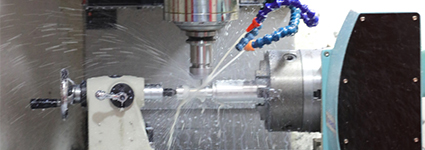


Precision conductive slip rings can be classified into many types, with different manufacturers having different standards and definitions. However, generally speaking, the classification methods are mostly similar. Firstly, they can be categorized based on structure. This type of precision slip ring generally refers to conductive slip rings with high internal space utilization and very small […]

Precision conductive slip rings can be classified into many types, with different manufacturers having different standards and definitions. However, generally speaking, the classification methods are mostly similar. Firstly, they can be categorized based on structure. This type of precision slip ring generally refers to conductive slip rings with high internal space utilization and very small volume, such as the LPMS series slip rings from JINPAT. Another category is the technically intensive precision slip rings, which include fiber optic slip rings, high-frequency slip rings, etc., and are included due to their high development difficulty. Then, they can also be classified based on the functions of the slip rings. This type of precision slip ring not only has the ability to transmit power but also has one or more functions such as gas, liquid, or signal transmission.

As a professional and experienced slip ring manufacturer, JINPAT has been in the industry for nearly 30 years. As early as 2002, they established their own technology R&D center, focusing on developing independent R&D capabilities. They also have extensive experience in the development of precision slip rings. As for fiber optic slip rings, which have very high performance and excellent application prospects, JINPAT started its independent R&D early. In 2009, JINPAT successfully developed fiber optic slip rings with independent intellectual property rights.
As a kind of precision slip rings, fiber optic slip rings have their own uniqueness. First, fiber optic slip rings do not transmit electricity, gas, liquids or other media; they only transmit light. For example, among the seven colors of light commonly seen in everyday life – red, orange, yellow, green, blue, indigo and violet – some of the light can be transmitted through fiber optic contact rings at their respective operating wavelengths. The fiber optic slip rings developed by JINPAT use single-mode or multi-mode fibers covering the wavelength range from 650 nm to 1650 nm, corresponding to visible light and near-infrared radiation.
Since transmission is via fiber optics, fiber optic slip rings do not require electronic components, but only optical components. Since these optical components must be optically coupled to single-mode fibers with core diameters as small as 9 or 10 micrometers and multi-mode fibers with core diameters of 50 or 62.5 micrometers, the volume is extremely small, which requires extremely high mounting accuracy. This makes it very difficult to fabricate and machine fiber optic slip rings, which is also the main reason for the high accuracy of fiber optic slip rings. Due to the high processing complexity of internal components and extremely high requirements for precision manufacturing technology, there are not many slip ring companies, such as JINPAT, that can independently develop and manufacture fiber optic slip rings.
JINPAT is committed to developing exclusive slip ring solutions for customers. If you have any requirements for slip rings, please feel free to contact us.
keywords integrated slip rings slip ring slip ring slip ring Optical slip rings Optical hybrid slip rings custom slip ring slip ring slip ring fiber optic rotating links Fiber optic rotating links fiber optic rotating links

JINPAT photovoltaic slip rings have high quality and competitive price. JINPAT has provided hundreds of models of electro-optical rotary joints for both civil and military industries. Most of JINPAT electro-optical slip rings have high transmission capacity. High-end slip rings can transmit 4K@60FPS high-definition video signals. OVERVIEW Design product sketches and models using SOLIDWORKS 3D Computer […]

With many years of experience in managing various types of projects, the management team of JINPAT is able to eliminate all obstacles that arise during the execution of projects to ensure that the technology is followed and the products are manufactured successfully. In addition, JINPAT understands the importance of good documentation. Documents such as certificates […]

JINPAT carries out precision machining of all components of its products. At all stages of production, from drawing to molding, JINPAT is committed to being precise and ensuring that the best slip rings are produced. With the ability to machine parts to a tolerance of 5 microns, our experienced, highly skilled team uses the latest […]

JINPAT welding technicians are experts in Gas Metal Arc Welding (GMAW), Flux Cored Arc Welding (FCAW), Gas Tungsten Arc Welding (GTAW) and Semi Metal Arc Welding (SMAW). They are dedicated individuals who value precision and aesthetics in the production of machine components. OVERVIEW Welding procedures comply with codes such as ASMEIX, AWS, DIN, API, B31.1, […]

JINPATElectronics is a customer-oriented corporation. We do our utmost to provide our customers with high-standard solutions for transmission including rotation. Up to now, JINPAT has provided its services to more than 10,000 customers worldwide. Each slip ring produced by JINPAT undergoes a series of rigorous and systematic inspections and durability tests before being delivered to […]

With advanced testing and measuring devices, JINPAT’s Quality Control Department conducts systematic inspections of our products. Our quality measurement system complies with ISO 9001:2015. JINPAT has great confidence in its products and has earned a good reputation for producing products of unrivaled quality. REVIEW Detailed inspection and provision of data in the form of documentation […]